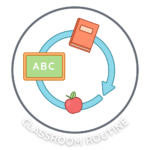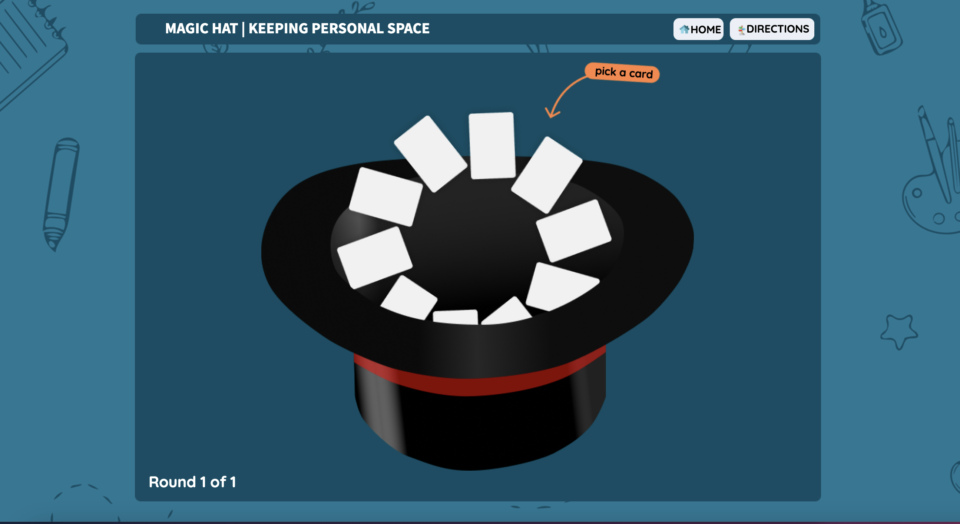
As special educators, we understand that teaching preschoolers about personal space can be a challenging yet essential task. Maintaining personal space is a crucial social skill that sets the foundation for positive peer interactions and helps prevent conflicts. Whether in the classroom, on the playground, or during group activities, preschoolers need guidance on how to respect the physical boundaries of others.
This blog post will provide special educators with a simple, no-prep lesson plan to teach preschool students how to keep personal space. The lesson will include a fun charades activity called “Magic Hat: Keeping Personal Space” from Everyday Speech. Additionally, the post will follow best SEO practices, focusing on keywords like “personal space,” “preschoolers,” and “social skills.” Let’s dive into this easy-to-implement and engaging lesson plan.
Why Teaching Personal Space is Important
Preschool is a time of exploration and discovery, and children are still learning about boundaries—both physical and emotional. Teaching personal space at this age helps foster empathy, self-awareness, and respect for others.
For children with special needs, understanding personal space can be particularly challenging. They may struggle to recognize when they are too close to someone or might not understand why maintaining distance is necessary. That’s why breaking down this concept in an engaging, child-friendly way is so essential.
Key Benefits of Teaching Personal Space to Preschoolers:
Supports the development of empathy and respect for others
Encourages positive social interactions
Helps prevent conflicts and misunderstandings
Promotes safety in group settings
Lesson Plan: Teaching Preschoolers to Keep Personal Space
This lesson plan is designed to be simple, no-prep, and fun. The goal is to help preschoolers understand the concept of personal space and practice maintaining appropriate distance in various scenarios.
Objective:
By the end of this lesson, preschool students will be able to recognize the importance of personal space and demonstrate how to maintain it in different situations.
Materials Needed:
- A “Magic Hat” (or any fun hat)
- Space markers or cones (optional for designated areas)
Activity: “Magic Hat: Keeping Personal Space” Charades
This activity will allow students to explore different scenarios where personal space is important, all while having fun with charades.
How to Play:
- Gather students in a circle, ensuring they are seated comfortably with enough room around them.
- Explain that today they will be playing a special game called “Magic Hat: Keeping Personal Space.”
- Show them the magic hat, which will transform them into different characters and situations where personal space is important.
- One at a time, students will wear the hat and act out a scenario where they need to maintain personal space. For example, they could pretend to be:
- In line at the playground waiting for their turn on the swing
- Sitting at the snack table with friends
- Walking through a crowded hallway
- Standing in line at the ice cream truck
- After each charade, ask the other students to guess the situation and discuss why personal space is important in that scenario.
Activity Tips:
- Encourage students to use big gestures and expressions during the charades to make it more engaging.
- Use positive reinforcement to praise students when they demonstrate understanding of personal space.
- Adapt the scenarios based on the students’ needs, focusing on everyday situations they encounter.

Discussion and Reflection:
After the charades activity, gather the students for a discussion. Ask questions to reinforce their understanding of personal space:
- “Why is it important to give our friends enough space?”
- “How does it feel when someone is too close to you?”
- “What can you do if someone is standing too close to you?”
Encourage students to share their experiences and feelings. Use this time to emphasize the importance of respecting others’ boundaries and how maintaining personal space can make everyone feel safe and comfortable.
Accessing the Activity and Additional Resources
The Magic Hat: Keeping Personal Space activity is part of Everyday Speech’s comprehensive suite of digital tools designed to support social-emotional learning. Educators can access this activity and many other resources by signing up for a free trial on the platform.
In addition to the interactive activity, we offer a variety of video modeling lessons and interactive activities. Our resources are designed to make complex topics more accessible for students with diverse learning needs.
Unlock all of our Classroom Routine materials by signing up for your free trial today – no credit card required!
Access the full Social Communication Curriculum HERE!
Instant access to thousands of no-prep social skills activities, over 1000+ video lessons, and engaging games designed to enhance learning and development.
Sample Video
Students learn best by watching others their same-age model the behavior! Check out a sample video modeling lesson below. We offer our entire Social-Emotional Learning platform free for 14 days here!
Related Blog Posts:
Teaching Elementary Students Safe Bus Behavior
Back-to-School Elementary SEL Craft
Play Solutions Activity for Elementary Students





